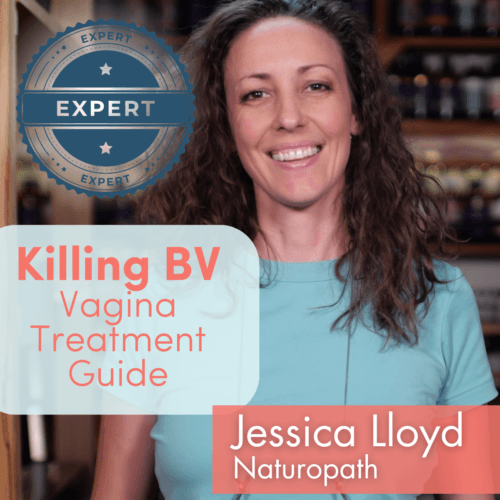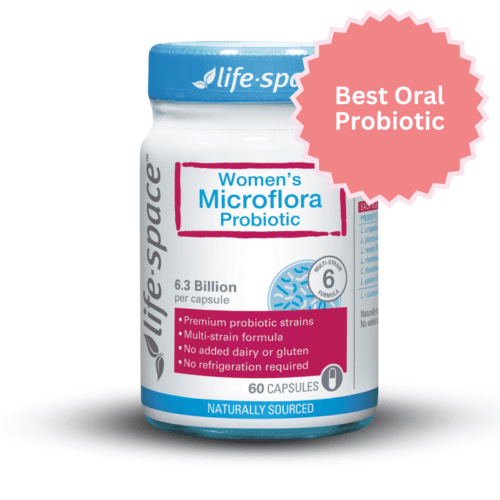In the 1950s and ’60s, a synthetic oestrogen called diethylstilbestrol (DES) was used extensively to prevent pregnancy disorders, starting off in Europe. There was a belief in the decades prior to this that oestrogen deficiency may be causing or contributing to a high foetal death rate amongst diabetic women. Diabetic women were, therefore, the first to be given the drug, followed quickly by anyone thought to have a high risk of miscarriage or stillbirths.
In 1970, research was published that reported young women with vaginal cancers, with the type of tumour (clear-cell carcinoma) very rare in anyone young. Clear-cell carcinomas are almost exclusively found in elderly women. The cause was drawn back to those young women whose mothers had been given DES during their pregnancy.
Over five million women are thought to have been treated with DES during their pregnancies and only occur with DES derivatives, not natural oestrogens. There was initially a great fear of the malignant outcomes, but this largely has not come to fruition, with the chances of vaginal malignancy small, and with frequent checks, treatable.
Vaginal adenosis is now thought to be a benign condition, not a precancerous condition. There have only been hundreds of cases of vaginal cancers in offspring, despite the millions of pregnant women treated.
The effect of DES on a foetus
It became clear over time that DES was causing structural changes in girls born to mothers who took the drug, particularly in the cervix and vagina. Most of these changes seem to be benign, but there is an increased cancer risk.
- Vaginal adenosis (cervical and endometrial cells found in the vaginal wall, where they are not normally found)
- Cockscomb cervix
- Uterine malformations
- Cervix malformations
How these abnormalities occur (theory)
The exact mechanism is not fully understood, but a working theory exists. In the womb, the cervix and most of the vagina are lined with a specific cell, columnar epithelium. At birth, most of these cells have converted to squamous epithelium.
Further changes occur at puberty and onwards. DES administration may stop this conversion of cells, and allow the columnar epithelium to remain in the vagina and outer portion of the cervix (the ectocervix). As the delayed conversion occurs at puberty, these glandular structures are still present. This results in small ‘glands’ in the vaginal mucosa being covered by squamous epithelium, replacing the glandular tissue completely, eventually.
The presence of these glands, either covered or uncovered, is called adenosis.
When the change in cells from columnar epithelium to malignant cells occurs is unknown, as is the delay of 10-30 years. The effect seems to be dose-dependent: mothers whose daughters have adenosis or clear-cell cancer had greater exposure earlier in the pregnancy.
Fertility outcomes of those with in utero DES exposure
Structural abnormalities in the uterus or an underdeveloped cervix may impede pregnancy and/or cause miscarriage. However, many women with DES exposure remain fertile and able to carry a healthy baby to term.
Support
For more information and support, visit DESaction.org.
Research into DES
- Troisi R et al, Gender Identity and Sexual Orientation Identity in Women and Men Prenatally Exposed to Diethylstilbestrol. Arch Sex Behav. 2020.
- Titus L et al, Prenatal Diethylstilbestrol Exposure and Risk of Depression in Women and Men. Epidemiology 2019.
- Titus L et al, Reproductive and hormone-related outcomes in women whose mothers were exposed in utero to diethylstilbestrol (DES): A report from the US National Cancer Institute DES Third Generation Study. Reprod Toxicol. 2019.
- Troisi R et al, Estrogen Metabolism in Postmenopausal Women Exposed In Utero to Diethylstilbestrol. Cancer Epidemiol Biomarkers Prev. 2018.
- Strohsnitter WC et al, Prenatal diethylstilbestrol exposure and mammographic density. Int J Cancer. 2018.
- Troisi R et al, Prenatal diethylstilbestrol exposure and cancer risk in women. Environ Mol Mutagen 2019.
- Troisi R et al, A Prospective Cohort Study of Prenatal Diethylstilbestrol Exposure and Cardiovascular Disease Risk. J Clin Endocrinol Metab. 2018.
- Hatch EE et al, Prenatal diethylstilbestrol exposure and risk of obesity in adult women. J Dev Orig Health Dis. 2015.
- Parker SE et al, Menarche, menopause, years of menstruation, and the incidence of osteoporosis. J Clin Endocrinol Metab. 2014.
- Palmer JR et al, Prenatal DES exposure in relation to breast size. Cancer Cause Control. 2013.
- Troisi R et al, Medical conditions among adult offspring prenatally exposed to diethylstilbestrol. Epidemiology. 2013.
- Hoover RN et al, Adverse health outcomes among women exposed in-utero to Diethylstilbestrol. N Engl J Med. 2011.
- Hatch EE et al, Preterm birth, birth weight and age at menarche among women exposed prenatally to diethylstilbestrol. Reprod Toxicol. 2011.
- Strohsnitter WC et al, Autoimmune disease incidence among women prenatally exposed to diethylstilbestrol. J Rheumatol. 2010.
- Titus-Ernstoff L et al, Birth defects in the sons and daughters of women who were exposed in utero to Diethylstilbestrol. Int J Androl. 2010.
- Palmer JR et al, Urogenital abnormalities in men exposed to diethylstilbestrol in utero. Environ Health. 2009.
- Camp EA et al, Breast cancer screening in women exposed in utero to diethylstilbestrol. Journal of Women’s Health. 2009.
- Camp EA et al, Cervical screening and general physical exam behaviors of women exposed in-utero to diethylstilbestrol. Journal of Lower Genital Tract Disease. 2008.
- Titus-Ernstoff L et al, Offspring of women exposed in utero to diethylstilbestrol (DES): A preliminary report of benign and malignant pathology in the third generation. Epidemiology 2008.
- Strohsnitter WC et al, The association between in utero cigarette smoke exposure and age at menopause. Epidemiology. 2008.
- Wise L et al, Time to pregnancy and secondary sex ratio in men exposed prenatally to diethylstilbestrol. Am J Epidemiol. 2007.
- Wise LA et al, Secondary sex ratio among women exposed to diethylstilbestrol in utero. Environ Health Perspect. 2007.
- Troisi R et al, Preeclampsia risk in women exposed in utero to diethylstilbestrol. Obstet Gynecol. 2007.
- Troisi R et al, Cancer risk in women prenatally exposed to diethylstilbestrol. Int J Cancer. 2007.
- Titus-Ernstoff L et al, Menstrual and reproductive characteristics of women whose mothers were exposed in utero to diethylstilbestrol (DES). Int J Epidemiol. 2006.
- Titus-Ernstoff L et al, Mortality in women given diethylstilbestrol during pregnancy. Br J Cancer. 2006.
- Hatch EE et al, Age at natural menopause in women exposed to diethylstilbestrol in utero. Am J Epidemiol. 2006.
- Palmer JR et al, Prenatal diethylstilbestrol exposure and risk of breast cancer. Cancer Epidemiol Biomarkers Prev. 2006.
- Troisi R et al, Birth Weight and Breast Cancer Risk. Br J Cancer. 2006.
- Larson PS et al, In utero exposure to diethylstilbestrol (DES) does not increase genomic instability in normal or neoplastic breast epithelium. Cancer. 2006.
- Palmer JR et al, Hypospadias in male offspring of women exposed to diethylstilbestrol in utero. Epidemiology. 2005.
- Wise LA et al, Risk of benign gynecologic tumors in relation to prenatal diethylstilbestrol exposure. Obstet Gynecol. 2005.
- Strohsnitter WC et al, Breast cancer incidence in women prenatally exposed to maternal cigarette smoke. Epidemiology. 2005.
- Perez KM et al, Reproductive outcomes in men with prenatal exposure to diethylstilbestrol. Fertil Steril. 2005.
- Titus-Ernstoff L et al, Psychosexual characteristics of men and women exposed prenatally to diethylstilbestrol. Epidemiology. 2003.
- Palmer JR et al, Risk of breast cancer in women exposed to diethylstilbestrol in utero: preliminary results (United States). Cancer Causes Control. 2002.
- Kaufman RH and Adam E, Findings in female offspring of women exposed in-utero to diethylstilbestrol. Obstet Gynecol. 2002.
- Hatch EE et al, Incidence of squamous neoplasia of the cervix and vagina in women exposed prenatally to diethylstilbestrol (United States). Cancer Causes Control. 2001.
- Titus-Ernstoff L et al, Long-term cancer risk in women given diethylstilbestrol (DES) during pregnancy. Brit J Cancer 2001.
- Strohsnitter WC et al, Cancer risk in men exposed in utero to diethylstilbestrol. J Natl Cancer Inst. 2001.
- Palmer JR et al, Infertility among Women Exposed Prenatally to Diethylstilbestrol. Am J Epidemiol. 2001.
- Kaufman RH et al, Continued follow-up of pregnancy outcomes in diethylstilbestrol-exposed offspring. Obstet Gynecol. 2000.
- Hatch EE et al, Incidence of squamous neoplasia of the cervix and vagina in DES-exposed daughters. Ann Epidemiol. 2000.
- Hatch EE et al, Cancer risk in women exposed to diethylstilbestrol in utero. JAMA. 1998.
The most comprehensive vaginal microbiome test you can take at home, brought to you by world-leading vaginal microbiome scientists at Juno Bio.
Unique, comprehensive BV, AV and 'mystery bad vag' treatment guide, one-of-a-kind system, with effective, innovative treatments.
Promote and support a protective vaginal microbiome with tailored probiotic species.





